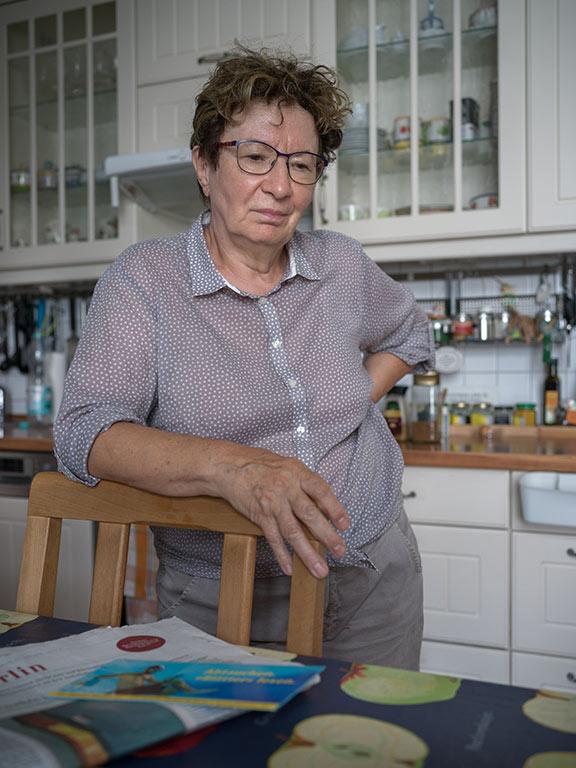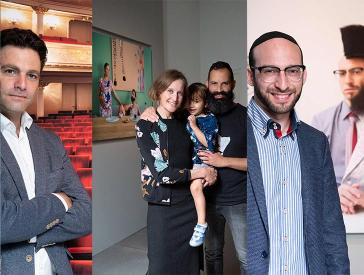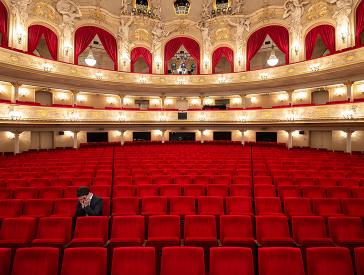Irene Runge
Interview and Photo from the Frédéric Brenner – ZERHEILT: HEALED TO PIECES Exhibition Opening

Irene Runge in the exhibition ZERHEILT: HEALED TO PIECES; Jewish Museum Berlin, photo: Jule Roehr
Dr. Irene Runge, b. 1942 in New York, NY. Moved to East Berlin (GDR) in 1949.
Where did the idea for your portrait’s staging and setting come from?
It was Frédéric’s idea. Probably because we’ve known each other for so long. He took my portrait for a book 20 years ago now...
How do you experience Jewish life in Berlin?
So so. I wish I were more active. By now I’m almost in the oldest generation. For example, hardly anyone at the Chabad synagogue on Alexanderplatz is as old as me. That’s absurd. I feel a lack of Jewish cultural centers, a JCC open to everyone, with a theater, cinema, restaurant, books, a café, clubs where you meet new people, where little chats and major debates would happen, including on global Jewish issues... like in Manhattan. You’d be a paying member, but probably Berlin’s Jewish population is too small for this, and thus undifferentiated, not to mention uninterested... The [official] Jewish Community has 10,000 members, but there is no record anywhere of the thousands who came here after 1990, as well as the Soviet immigrants, thanks to the right of return for descendants, often with European passports, and aren’t registered with the community. And children of [Jewish] fathers! They’re everywhere, and they experience Jewish day-to-day lives in many languages between Neukölln, Mitte, Prenzlauer Berg, and elsewhere. There are friendships, Jewish festivals, debates, cooking, culture, weddings, births, and also prayers. There are fourteen synagogues in Mitte, Kreuzberg, Charlottenburg, Prenzlauer Berg, and now even one in Steglitz, not to mention private prayer rooms and prayer circles in apartments and rented venues... Religion is taken care of, and the traditions are beloved , but communication is neither inclusive nor wide-ranging. My age group is left in the cold anyway, and besides that the East-West divide is still in place to this day. The older I get, the more I miss those who have died, my politically socialized Jewish confidants, their humor, their argumentativeness, our intellectual commonalities, our lifestyle, our discussions about experiences with exile and return to the GDR.
Describe your life in Berlin in three adjectives.
Balanced, inviting, curious.
What would your wish be for the future of Jewish life in Berlin?
There’s no getting around the future. Anyone who reduces Jewishness to the darkness of the Shoah is concealing the brilliance of today’s fresh Jewish life. Berlin should reorient itself to a self-confident, contradictory, many-layered Jewish population: to an influx from outside, not a high birth rate. The Shoah was meant to destroy every Jewish identity, but in Berlin, Jewish children – whether secular, Conservative, Orthodox, or Chassidic – can attend Jewish schools and preschools again. Jewishness can be learned, experienced, heard, tasted, read, and sung, but without living tradition, origins and history are a lifeless textbook. What I’m missing is a much more sympathetic Jewish “elite” that gets involved on intellectual and practical levels, out loud, open, heartfelt, day-to-day, cultural, and critical, getting to the root of challenges, and engaging beyond the Jewish world. Berlin is a big city. Recently, a variety Jewish lived realities have been evolving in many corners. Is there enough curiosity, respect, flexibility, and safe haven for that?
 X
X
From the photographic essay ZERHEILT: HEALED TO PIECES by Frédéric Brenner; Jewish Museum Berlin, purchased with the support of the Friends of the Jewish Museum Berlin
Citation recommendation:
Jewish Museum Berlin (2021), Irene Runge. Interview and Photo from the Frédéric Brenner – ZERHEILT: HEALED TO PIECES Exhibition Opening.
URL: www.jmberlin.de/en/node/8407




